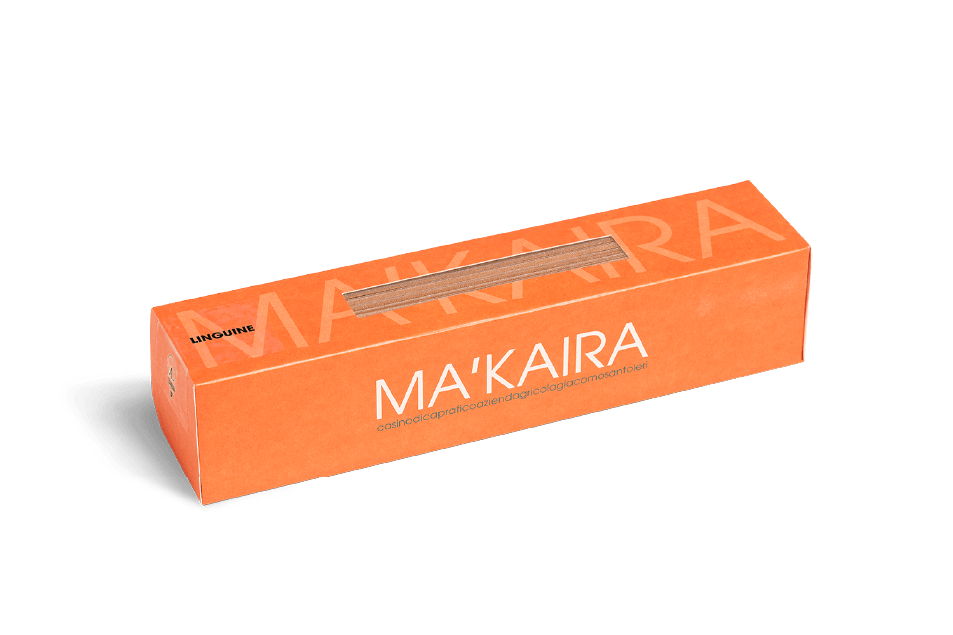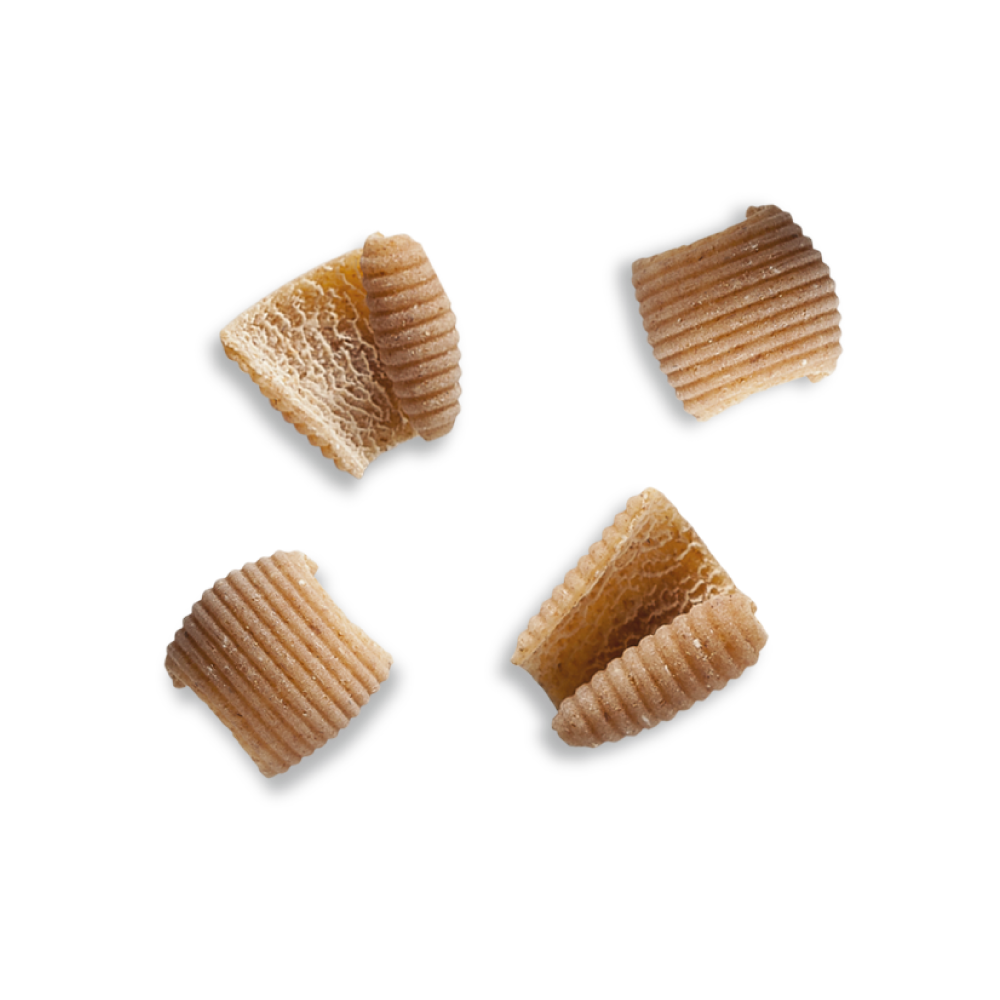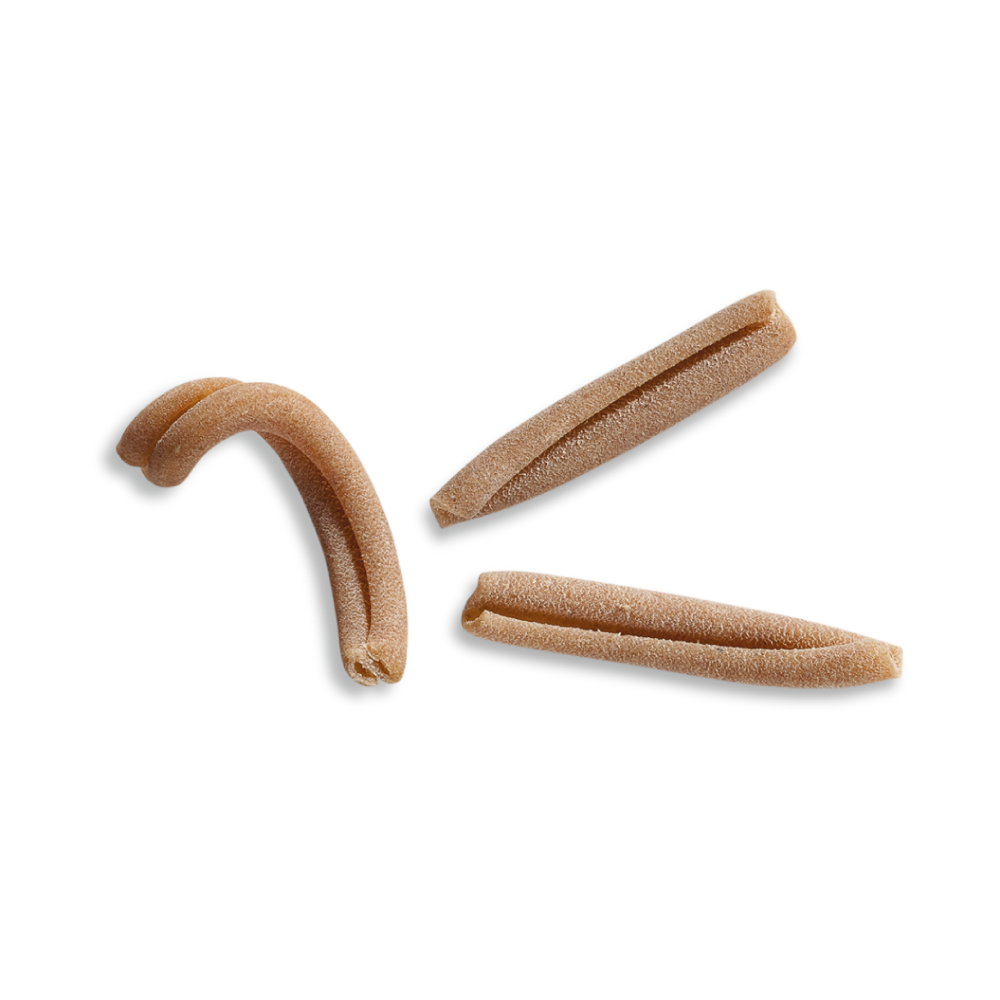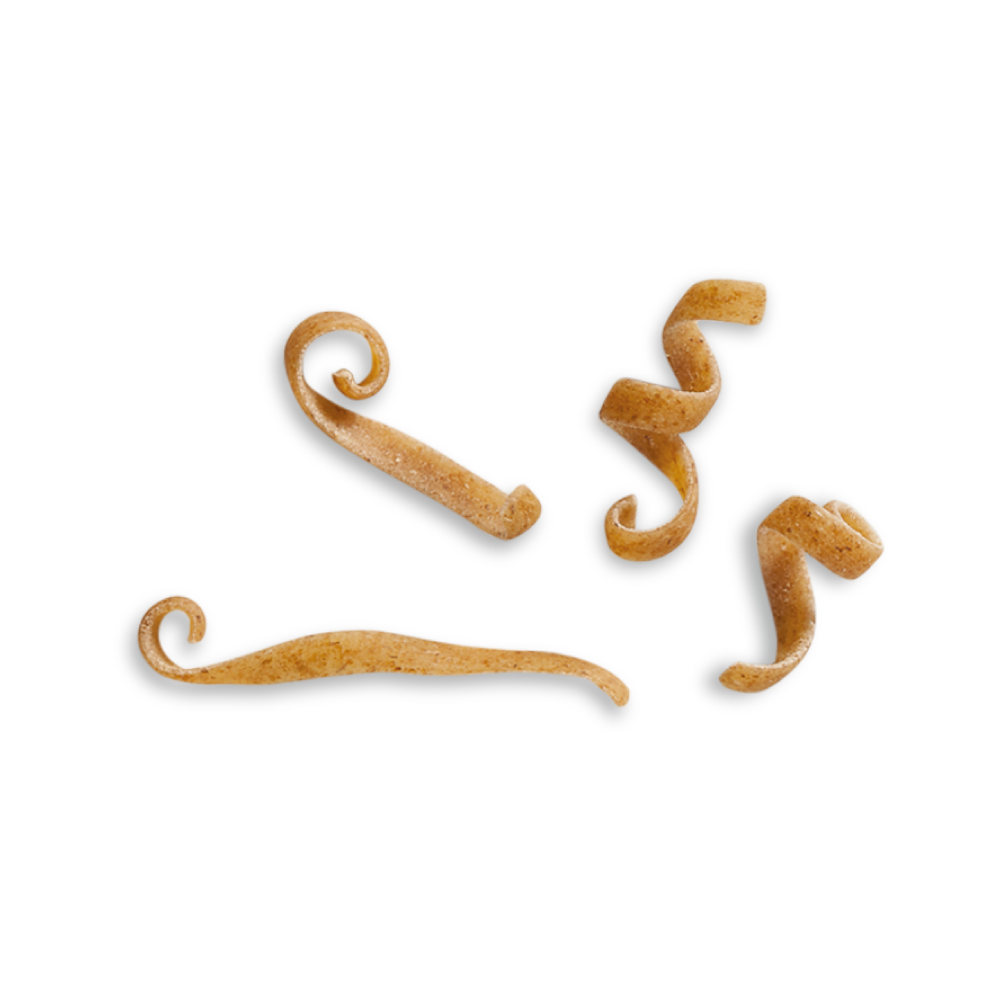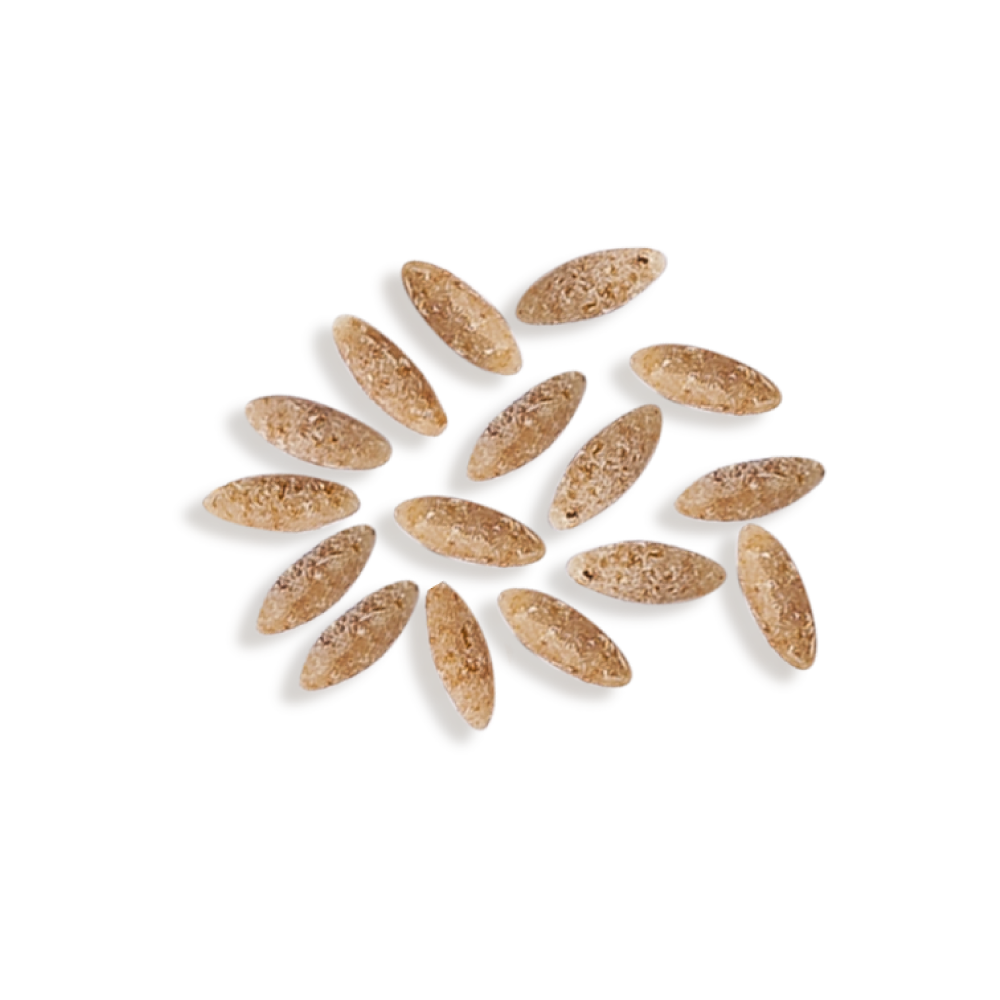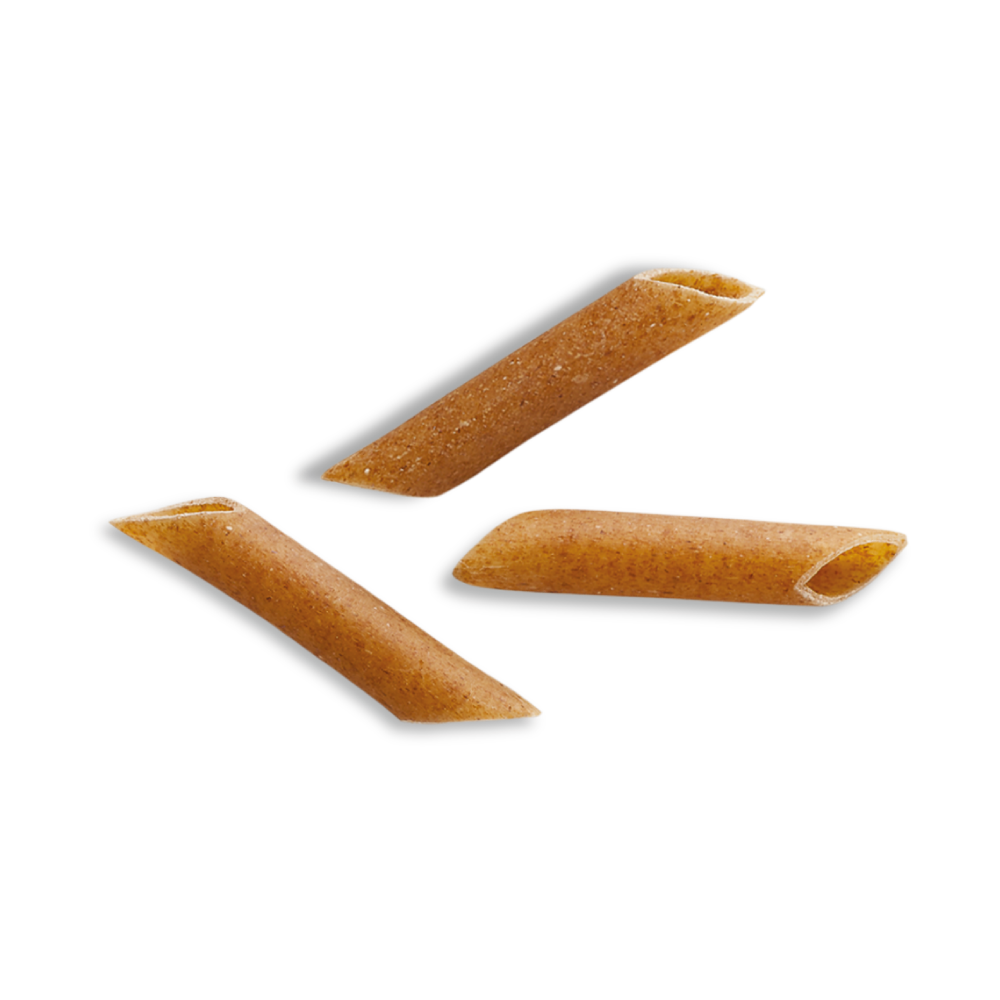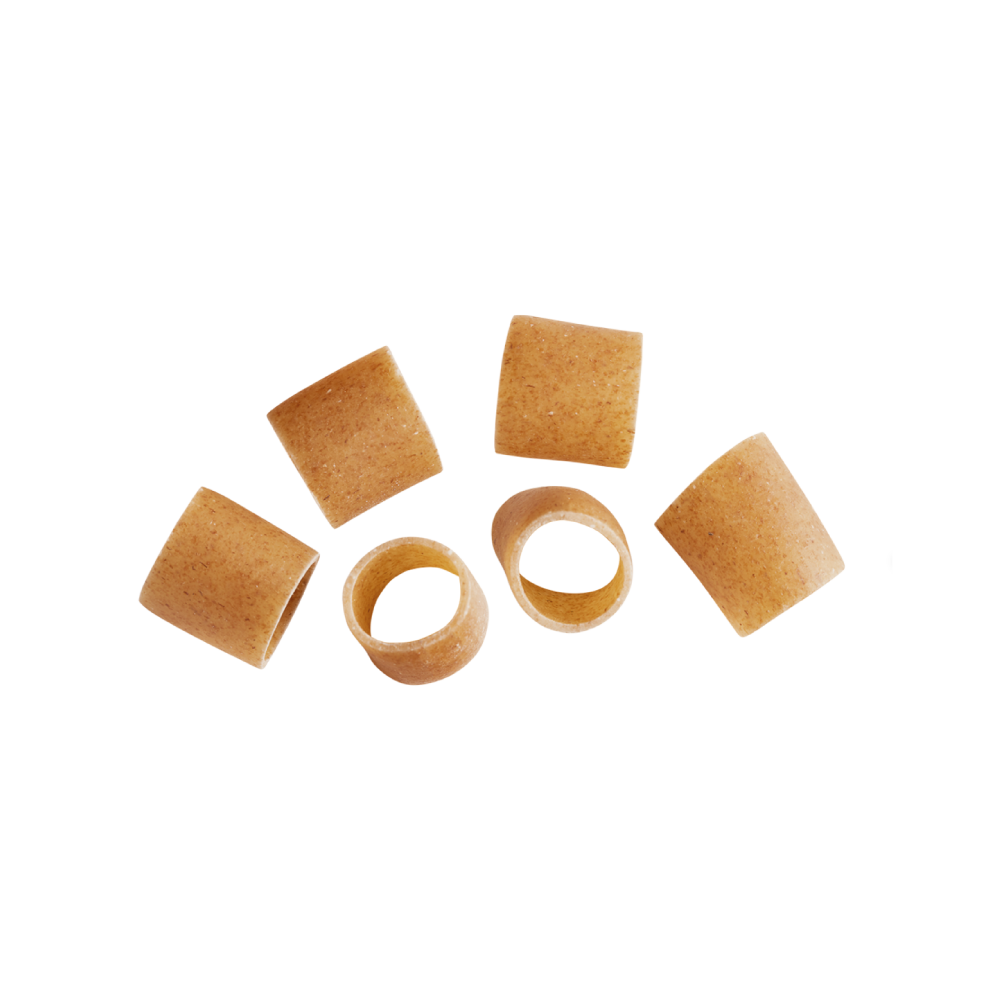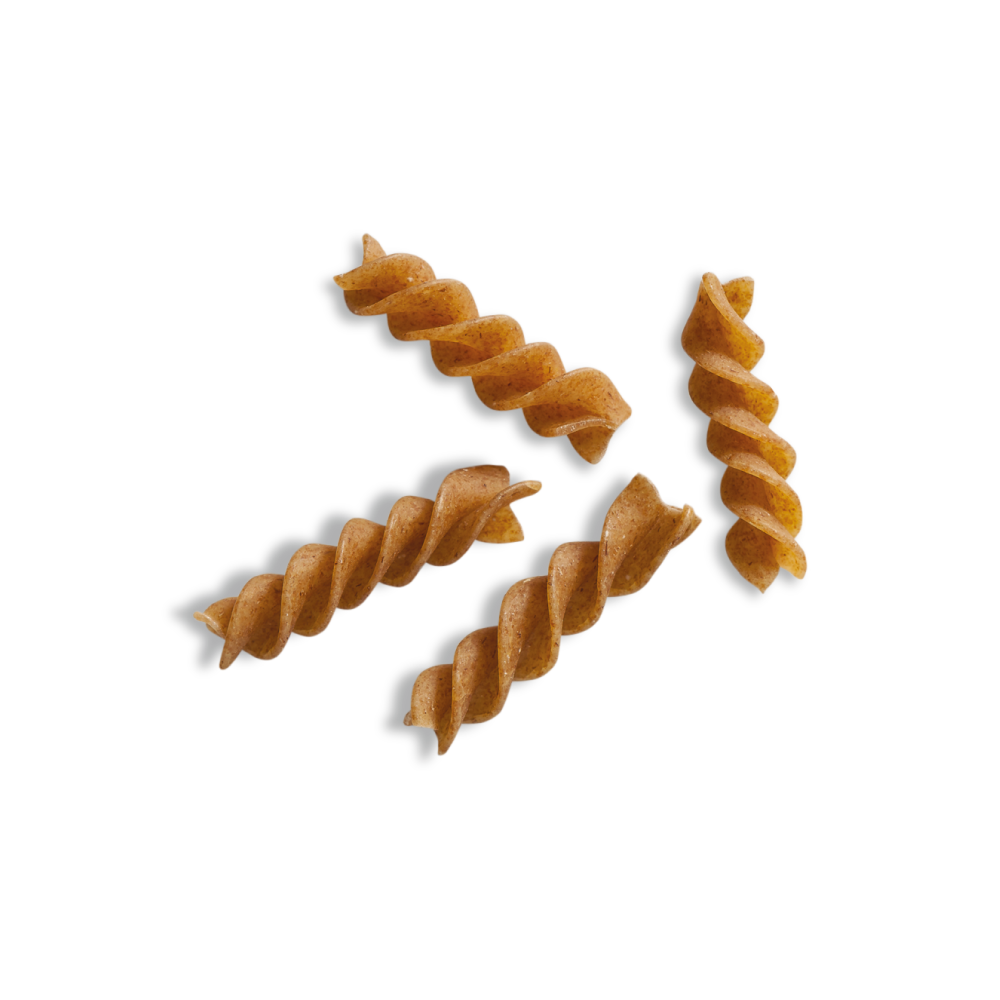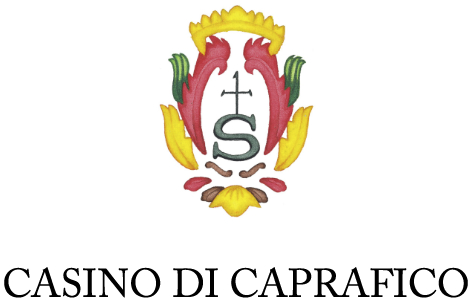Ma’Kaira Orange Box – Whole Emmer Wheat and Barley Pasta
Ingredients: Stone Natural Ground Whole Emmer Wheat (Triticum dicoccum) Flour 90%, Stone Natural Ground Whole Hulled Barley Flour (10%)
In the orange packages another version, always bronze drawn linguine and teflon drawn La’Gane and Bucatini, made with farro and hulled barley flour.
The integral characteristics of farro (high fiber) and its high component of resistant starch (prebiotic effects) combined with the nutritional characteristics of hulled barley contribute to the creation of the most nutraceutical product of our farm. The presence of betaglucans, typical of this cereal, contributes to the control of cholesterol metabolism, has a positive effect on postprandial glycaemia and on the insulinemic response. The effect of increasing the feeling of satiety should not be underestimated. Another important class of compounds present in the hulled barley grain is constituted by fats which include tocopherols and tocotrienols, whose molecule is structurally linked to vitamin E. These are antioxidant molecules able to compete with free radicals (tocopherols) and more markedly hypocholesterolemics (tocotrienols) usable in pathologies such as arteriosclerosis.
Pasta Shapes: Bronze drawn Linguine, Teflon drawn La’Gane and Bucatini
€ 4,80
History
Farro is an ancient cereal which was used by the people of Mesopotamia. It was of maximum nutritional importance during the Roman Ages, when, according to the testimony of Pliny the Elder it remained the only cereal used by the Ancient Romans for three centuries. It was in actual fact a precious food used by the Legions at war (each soldier had the right to 865 grams of emmer wheat a day). It was also considered to bring good luck to marriages and it was even used as a token of exchange. It is no coincidence that the Italian word farina (flour) derives from the far – farris, that is to say farro.
Nutritional Characteristics
Its main qualities are its high energy values and digestibility. When used in its wholemeal form it contains anti-stress properties due to its high magnesium content. It is especially rich in dietary minerals, and does not raise glycaemia levels but actually stabilizes them. As a result it is a very useful product for diabetics, and for athletes who require a constant energy release. It is also recommended for those who want to lose weight without giving up the pleasure of eating well.
How it is used
Farm can be used in various forms: in flour, grain (semi-pearled Farro) or cracked (Spelt). It can be eaten hot or cold, and it complements a great number of foods. It is excellent in soups, minestrone, chickpeas, lentils, and beans instead of pasta.
How it is cooked
Farro does not need to be washed in water if it is already clean. It is ready for cooking, without being soaked, in abundant water (it is recommended to use a quantity of water that is 2 or 2.5 times the weight of the cereal used) that is not too salty. Cooking time for the Farro varies. The semi-pearled Farro requires 25/30 minutes and 15/20 minutes for Spelt. After cooking it is recommend that the Farro is left to stand for a few minutes before being added to the condiment to allow the cereal to it to “stand” slowly away from the heat. It can be used in recipes in quantities of 50/60 grams per person instead of rice by adding it to a sautè base, adding red or white wine and mixing it with a good broth (always in the quantities mentioned above) just like the preparation of a risotto. It is therefore possible to use farro for omelettes, arancini, in the oven (like timballo), with vincotto, vegetables, salad, or simply together with raw olive oil and some grated Parmesan cheese. From an agronomical point of view farro is suitable for “natural” cultivation using biological techniques. Being quite tall in size it does not require specific fertilization, which would be counter-effective as it would cause possible allurement. The use of chemical weeding products is also unnecessary because its size provides a natural defence against pests. As was explained before due to the composition of the bran farro can be used in wholemeal forms in both soups and pasta.

